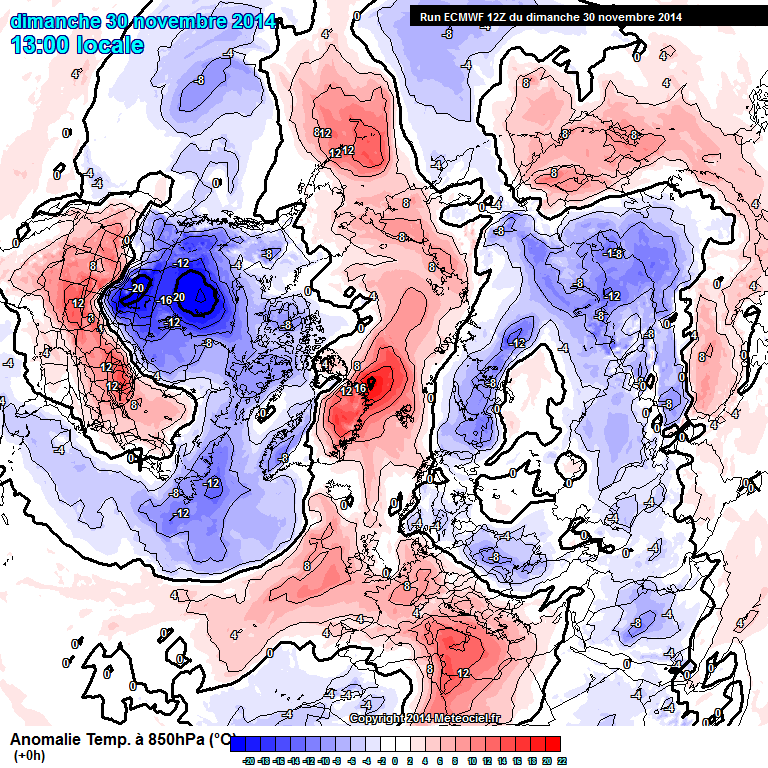An den WetterBlog wurde die Bitte heran getragen, zu erklären, warum der Winter „kaputt“ ist. Wir könnten jetzt erstmal länger darauf herum reiten, was kaputt genau heißen soll – kaputt im Vergleich zu klimatologischen Mittelwerten oder nur in meiner subjektiven Wahrnehmung? Kaputt allgemein oder nur an meinem Hausberg? Und überhaupt, meteorologisch gesehen ist erst seit 3 Tagen Winter, woher soll man da wissen, ob irgendwas kaputt ist? Aber wir sind ja nicht so …
Bedingt durch die sehr negative Strahlungsbilanz bildet sich im Winter ein Höhentief über dem jeweiligen Winterpol – der hier schon viel zitierte Polarwirbel. Über der Arktis hat der Polarwirbel wegen der ungleichmäßigen Land-/Wasser-Verteilung häufig eine dipolartige Struktur mit zwei Zentren. In der Antarktis ist er runder und langlebiger, da dort der Pol von Wasser umringt ist und keine Landmassen den Westwinden im Weg liegen. Ein „gesunder“ Polarwirbel ist möglichst rund und wird von einem Jet umkreist, der zonal verläuft und nur wenige, schwach ausgeprägte Wellen hat. Das heißt in unseren Breiten typischerweise Atlantikwetter mit einer feuchten, nicht allzu kalten West- oder Nordwestströmung und einer raschen Abfolge von kleineren Randtiefs.
Ein „gestörter“ Polarwirbel schlägt viele, ausgeprägte Wellen, ist nicht besonders rund und sieht aus wie ein Farbklecks aus einem Comic. Die Westdrift wird so gern mal blockiert und Wetterlagen können sich lang halten. Je nachdem wo man sich in der Welle befindet, ist es entweder lange sehr kalt oder sehr warm, oder man schwimmt sozusagen in der Gischt am Wellenrand und kriegt einen Sturm nach dem anderen ab.
Für uns entscheidend ist seit geraumer Zeit ein Hoch über Osteuropa, dass die Frontalzone des Jets weit in den Norden schiebt, beziehungsweise Tiefs wenn dann nur südlich der Alpen im Mittelmeerraum vorbei lässt.
Da mit einer zunehmend warmen Arktis im Winter die Druckgegensätze zwischen dem Pol und dem Rest der Welt kleiner werden, wird damit theoretisch auch der Polarwirbel geschwächt. Das regt Spekulationen an, dass es in einem wärmeren Klima häufiger zu eingefahrenen Winterwetterlagen (in beide Richtungen) auf Grund „gestörter“ Zirkulation kommen könnte. Die Betonung liegt hier auf „Spekulationen“. Definitive Aussagen zu langfristigen klimatischen Entwicklungen lassen sich nicht auf Grund und zwei Wintern treffen, und im Sinne der sinnvollen Statistik auch nicht auf Grund von 10 Wintern.

























